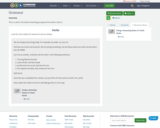
This is a short microlesson teaching young learners what a verb is.
- Subject:
- Language Education (ESL)
- Material Type:
- Lecture Notes
- Author:
- Antoinette Wentworth
- Date Added:
- 10/22/2021

This is a short microlesson teaching young learners what a verb is.
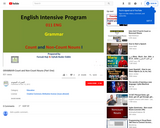
Tutorial on count and non-count nouns with audio, video, examples, vocabulary lists, and quantity word usage.
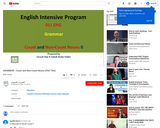
Tutorial on count and non-count nouns. Continuation of Part One
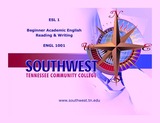
This file contains grammar lessons and assignments for a Level 1 academic ESL class with an emphasis on applying grammar lessons in writing. It can be combined with the other files in this folder to create an entire OER based class.

Driving question:What is the most irrelevant theme to today's modern society from The Great Gatsby?Purpose:1. Students to think critically and analytically.2. Students to gain a more in-depth understanding of how to find themes within texts and be able to have a deeper connection with modern society. Standards: 1) 9-10. RL. 2.2: Analyze in detail the development of two or more themes or central ideas over the course of a work of literature, including how they emerge and are shaped and refined by specific details.2) 9-10.RN.4.3: Analyze seminal U.S. and world documents of historical and literacy significance, including how they address related themes and concepts. Grabbers: To show clips from the movie to highlight themes that will be assigned to students. These clips can be used as evidence for the students projects (video clips are in teacher materials tab).https://www.youtube.com/watch?v=jKs6tUxVC7M - Morals and American Dreamhttps://www.youtube.com/watch?v=jqA1ISMJJQY - Society and Class or Moralshttps://www.youtube.com/watch?v=uyZrLD_fDLY - materialism and Gender Roleshttps://www.youtube.com/watch?v=yH7eRHHVGGA - materialismhttps://www.youtube.com/watch?v=TTWumSE8GXM - moralityhttps://www.youtube.com/watch?v=MCxbZ8D7N1o - gender rolesLesson Summary:After the class has read the Great Gatsby, Groups of five will be assigned one main theme from the reading and they will have to support why they think their theme is the most relevant in today’s modern society. They will find sub arguments within the text in order to support this claim and present this information through a digital presentation. Students will also be required to use direct references and quotes to defend their answer. Groups should split up the work evenly and work collaboratively. Students will present their digital presentations to the class. Students will then have a debate taking the persuasive stance on why they think their theme is the most relevant and support it through evidence from their research. After the digital presentations are turned in, presented, and each student is informed by other group's theme in detail by the presentation and challanged by debate, students will write an individual reflection on what theme they personally think is the most relevant in today's society.Lesson Narrative:Introduction: Remind students of presentation expecptations and focuses on the central question asked - What is the most irrelevant theme to today’s modern society from The Great Gatsby?Presentations: Students representing groups that support the six themes from the book, (morality, American dream, society, class, materialism, and gender roles) give presentations that are informative, descriptive, and supported with evidence from the book and other outside sources to the class. Instructor: Asks leading questions during presentations to allow students to go more in depth on their theme. Addresses any questions or misinterpretations that occurred during the presentations. Debate: Each group will then be challenged by the other students of different themes and should argue why their theme is the most relevant in today's society. Each group should respectfully address one another and challenge each others ideas and to support their own with their evidence from their presentations. Each group should work together in order to work towards the goal of being the most relevant by collaboration.Instructor: The instructor uses questions to clarify factual claims, ask for supporting evidence, include other members within the class in the debate, and connect the presentations to the discussion to broaden the understanding of each theme/side to the book and it's relevance.Debriefing: The instructor again asks the driving question. Clarifies any confusion, questions, or misinterpretations raised during the debate. Then summarizes what happened during the debate and lets the class think about other group's stance on their themes. Culminating Activity:1. Provide closure for major driving question.2. Gives the opportunity for students to be persuasive and show their understanding of the lesson. Lesson SummaryAfter researching, presenting, and discussing the central driving question mentioned before, students should be able to write an individual essay based off of previous experience with the project. The individual essay will require the students to reflect on their understanding and take from their personal opinion on what they think the most relevant issue in The Great Gatsby to today's modern society. Example of Culminating ActivityA Persuasive EssayAnswer the following question as an individual reflection from the previous lesson: What is your personal opinion on what theme from the Great Gatsby is the most relevant in today's society? Now that you have researched, presented, and discussed extensively the main 6 themes from the Great Gatsby: morality, American dream, society, class, materialism, and gender roles, pick ONE of these themes and have sub-arguments, evidence, and quotes to support your opinion. This paper should be at least 5 paragraphs long, see guidelines below. The paper should be in MLA format and cited correctly. No direct quotes should be longer than three lines. Paragraph 1: Introduction - short summary of the book, thesis Paragraph 2: Sub-argument with evidence from book, movie, class presentations, debate, and other outside sources to support this argument. Paragraph 3: Sub-argument with evidence from book, movie, class presentations, debate, and other outside sources to support this argument.Paragraph 4: Sub-argument with evidence from book, movie, class presentations, debate, and other outside sources to support this argument. Paragraph 5: Conclusion - Wrap up thoughts, restate thesis

Short Description:
This set of multimedia materials incorporates interesting topics and real-world language in an accessible way for adult English language learners at the low-to-mid intermediate level, using eclectic methods (communicative activities, content-based instruction lite, focus on form), all while maintaining a connection to our learners’ lives
Long Description:
This set of multimedia materials incorporates interesting topics and real-world language in an accessible way for adult English language learners at the low-to-mid intermediate level, using eclectic methods (communicative activities, content-based instruction lite, focus on form), all while maintaining a connection to our learners’ lives
Each unit has handouts, presentation slides, key vocabulary lists, informative speeches recorded by ESOL teachers at PCC, dialogs, extension activities, and additional videos or materials for assessment. The videos can be linked to directly, embedded in a class page or Learning Management System (LMS, such as Canvas), or downloaded. Closed captioned versions of the videos are also available. Teachers can incorporate everything here, or take an a la carte approach with their existing activities and curricula.
To make it easier to navigate these materials, we are gathering them in a pressbooks site as well. That site may make it easier for teachers to navigate and share links with students.
Like any set of classroom materials, this OER is not a “class in a box.” We anticipate that teachers will have their own approach to in-class (or synchronous online) activities, out-of-class work, assessments, and speeches, so we’re not offering a one-size-fits-all solution.
These materials are openly shared (with the exception of youtube videos, where noted), which means you have all the permission you need to use, adapt, and re-share them. All we ask is to attribute the materials to “Green Tea Communication OER,” and, if you have a moment, let us know if you found the materials helpful.
Please let us know if you have feedback, questions, or additional contributions to this project: eric.dodson@pcc.edu, luciana.diniz@pcc.edu and nleiton@pcc.edu
Word Count: 5790
(Note: This resource's metadata has been created automatically by reformatting and/or combining the information that the author initially provided as part of a bulk import process.)

This lesson plan is designed for novice, level 1 Spanish college students. The objective of this lesson is to assist students in understanding the difference and purpose of formal vs. informal greetings and responses. There are several practice activities included. The author of this resource is Rachel Mano at Utah State University.
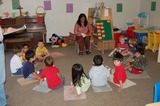
Five-day unit plan that leverages the power of the Classroom Circle to teach classroom expectations, recognizing values, self-awareness, emotions, strengths and struggles, teamwork, and empathy. The Classroom Circle is a powerful tool in building a classroom community. It's a way to teach and practice expectations for speaking and listening, as well as creating a classroom that provides a safe place for students to be vulnerable, empathetic, and to build on their own self-awareness.
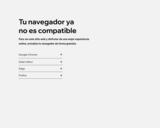
Curso introductorio en línea de lenguaje de señas

This is an initial draft edition of an integrated grammar and composition book for intermediate (level 5 of 8) students of English for Speakers of Other Languages. Grammar lessons review basic verb tenses, while composition lessons help students to master a healthy paragraph and then introduce the basic components of an essay. Materials use an arts theme.
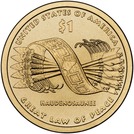
Students will receive exposure to new vocabulary, then read and annotate an article, discuss, and engage in a writing exercise, focused on the Iroquois Confederacy.

This lesson teaches a student how to express ownership. Have and Have Got: an ESL Lesson Plan is suitable for elementary-level students learning about simple verbs.If you want additional lesson plans and support, including teachers’ notes, be sure to register for a free Off2Class account.

CBI AND CLIL
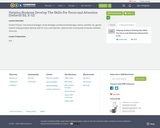
Student Primers, Instructional Strategies, Study Strategies and Recommended Apps, Games, Activities, etc. geared towards helping students develop skills for Focus and Attention. Optional links to thousands of teacher-reviewed resources.
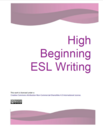
Created for Washtenaw Community College's high beginning ESL students, this OER writing textbook covers writing sentences and narratives, as well as improving spelling and grammar.
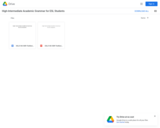
This thematic integrated-skills textbook includes reading, writing, speaking and listening activities on themes such as Psychology, US History and Lifespans. CEFR B2 level.

This is a lesson familiarizing students with right triangle trigonometry with applied problem solving.

In this lesson, students will learn what the word “Hispanic” means and what some elements of culture are. Pairs/groups of students will read about a Hispanic country and create a one-pager showing cultural elements of that country.
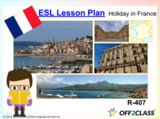
Notre Dame, Marseille, Montpellier. If you’re looking to add a bit of color and culture to your student’s reading activities, this new ESL Lesson Plan on holiday in France offers just the ticket.Suitable for intermediate learners, the lesson plan is built around the theme of holidays. It offers students the chance to practice their reading skills while learning about intensifiers, idioms and informal language.If you want additional lesson plans and support, including teachers’ notes, be sure to register for a free Off2Class account.
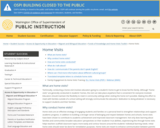
Professional development and practical online tools that will support classroom teachers in conducting home visits.